

As an interior designer, one of the most crucial aspects of transforming a space is mastering the art of lighting. Lighting is more than just a practical necessity; it's a powerful design tool that can set the mood, enhance aesthetics, and make a room feel cohesive. In this blog post, I’ll guide you through the different types of lighting, share tips for incorporating them into your design, and help you avoid common lighting mistakes.
The Three Types of Lighting
Before we dive into design tips, it’s important to understand the three main types of lighting: ambient, task, and accent lighting. A well-lit space often requires a combination of all three.
1. Ambient Lighting
Also known as general lighting, ambient lighting provides the overall illumination in a room. It can come from ceiling fixtures, pendant lights, or natural light sources. The goal of ambient lighting is to create even comfortable illumination without harsh shadows.
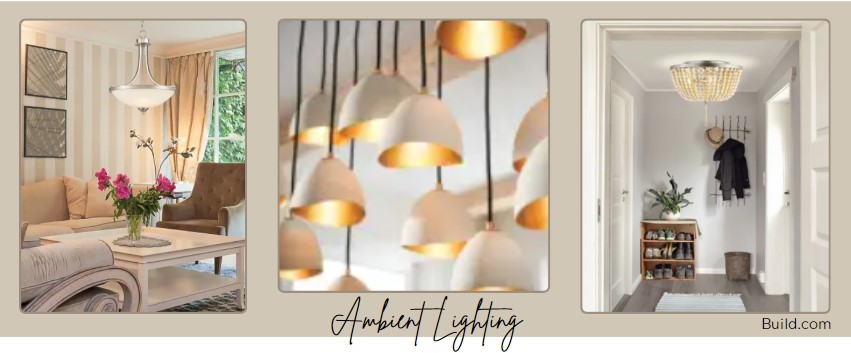
2. Task Lighting
As the name suggests, task lighting is focused on areas where specific activities are performed. Think of reading lamps next to your bed, under-cabinet lighting in the kitchen, or a bright desk lamp for your home office. Task lighting ensures that the space is practical and functional.
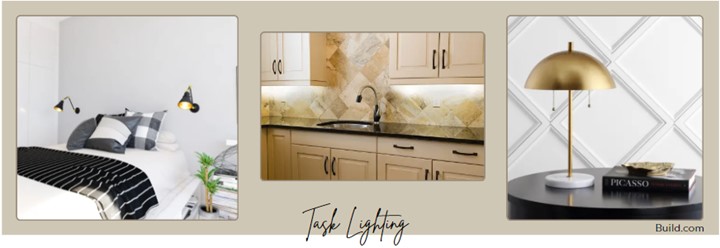
3. Accent Lighting
This is your opportunity to showcase the personality of a room. Accent lighting is used to highlight architectural features, art pieces, or design elements you want to emphasize. Think of wall sconces, up lights, or spotlights that draw attention to a feature wall or a beautiful sculpture.
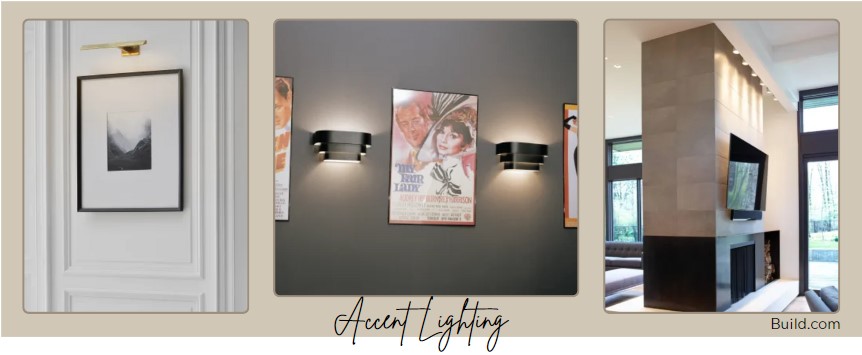
Designing with Lighting in Mind
Now that we’ve broken down the three types of lighting, let’s discuss how to incorporate them into your design plan for different rooms in the house.
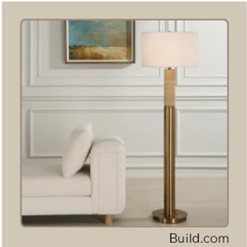 Living Room
Living Room
The living room is a multi-functional space, so it requires a balance of all three types of lighting. Start with a statement chandelier or pendant light for ambient lighting. Next, use floor or table lamps near seating areas for task lighting, perfect for reading or conversations. Finally, consider adding wall sconces or recessed lighting to highlight artwork or architectural details for accent lighting.
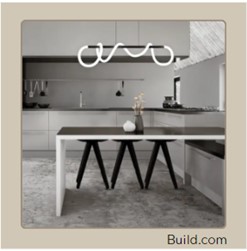 Kitchen
Kitchen
In the kitchen, task lighting is critical. Install pendant lights over the kitchen island and under-cabinet lighting to ensure you can see clearly when cooking or preparing meals. Use recessed lights for ambient lighting to avoid creating shadows. If you have open shelving, use strip lights to subtly illuminate your display and add a touch of accent lighting.
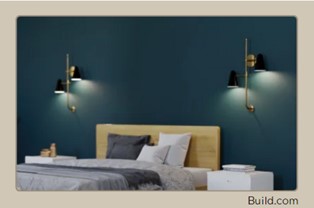 Bedroom
Bedroom
Your bedroom lighting should create a relaxing atmosphere. Use a dimmer switch on ceiling lights for softer ambient lighting. For task lighting, opt for wall-mounted reading lights or bedside lamps that provide focused light without overpowering the space. Accent lighting can come in the form of subtle floor lights or a small fixture that highlights a piece of art or feature wall.
 Bathroom
Bathroom
In bathrooms, task lighting around the mirror is key. Vanity lights on either side of the mirror or an illuminated mirror will ensure even lighting for grooming. For ambient lighting, choose fixtures that won’t cast harsh shadows – recessed ceiling lights work well. Consider cove lighting around the bathtub or under cabinets for an elegant accent.
Common Lighting Mistakes to Avoid
Final Thoughts

Lighting is an essential part of any interior design project. It can transform the mood, enhance design elements, and ensure a space is both functional and beautiful. Don’t be afraid to experiment with different lighting sources and layering techniques to create the perfect ambiance in every room. And remember, lighting should work in harmony with your overall design to elevate the entire space. Whether you’re revamping a single room or designing an entire home, thoughtful lighting can make all the difference.
Click this link to learn more about Holmes' *Complimentary Design Services
Click this link to learn more about our in-house Interior Designer, Michele Savoy
©2025 HOLMES BUILDING MATERIALS